Guide to Thru-Hulls and Sea Strainers, Part 2
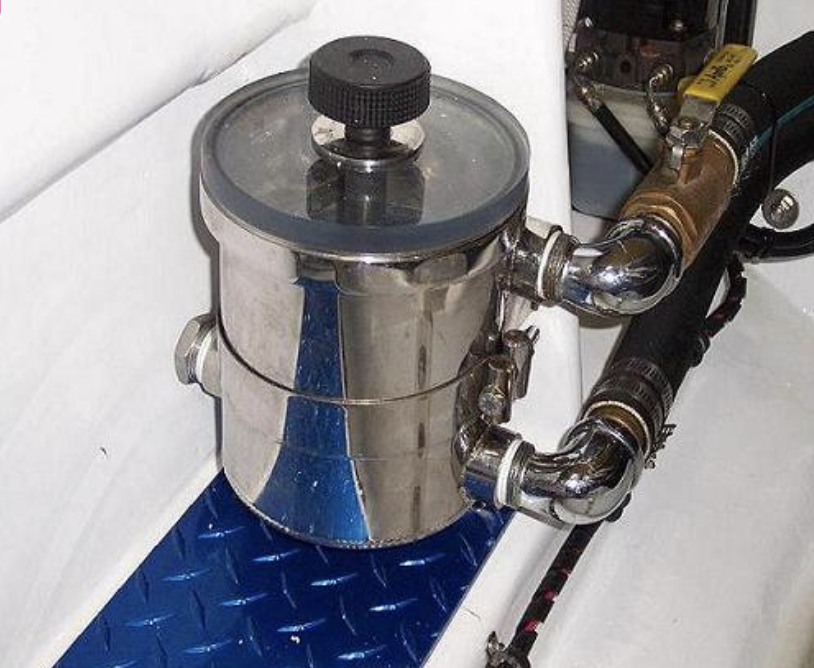
In Part 1, we looked at the parameters for selecting thru-hull fittings and seacocks and offered tips on installing and maintaining them. In this section, we’ll look at sea strainers, as well as reviewing some of the best of each currently on the market.
Sea Strainers are simply filters located between the thru-hull and the device being supplied with raw water. They’re designed to capture seaweed, plastic and other debris before it can get into the machinery.
In general, the larger the filter the better, because a larger filter cleans more water more quickly, assuring an unrestricted flow to engines and other equipment that will be damaged without it.
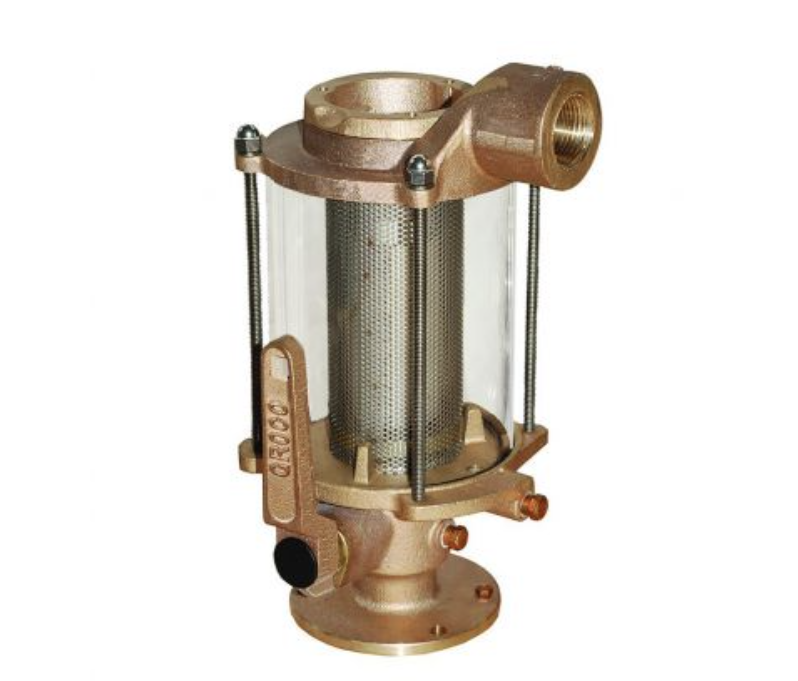
Those for engines are typically supplied by 1.5” (3.8 cm) to 2” (5.1 cm) hoses or piping. Small filters with ½” (1.27 cm) diameter supply line attachments are only meant to supply low-volume needs like a cockpit washdown hose.
The easier a sea strainer is to clean, the more it’s likely to get cleaned, and the better your water supply to engine, generator and other machinery. So, the strainer must be located in an accessible location in the bilge. Those with screw off caps and liftout filters are easiest to service.
Ideally, the strainer should be mounted above the waterline, which allows cleaning it without reaching down into the bilge to shut off the seacock. If it’s mounted below the waterline, you MUST remember to shut off the seacock before opening the cap of the strainer, of course.
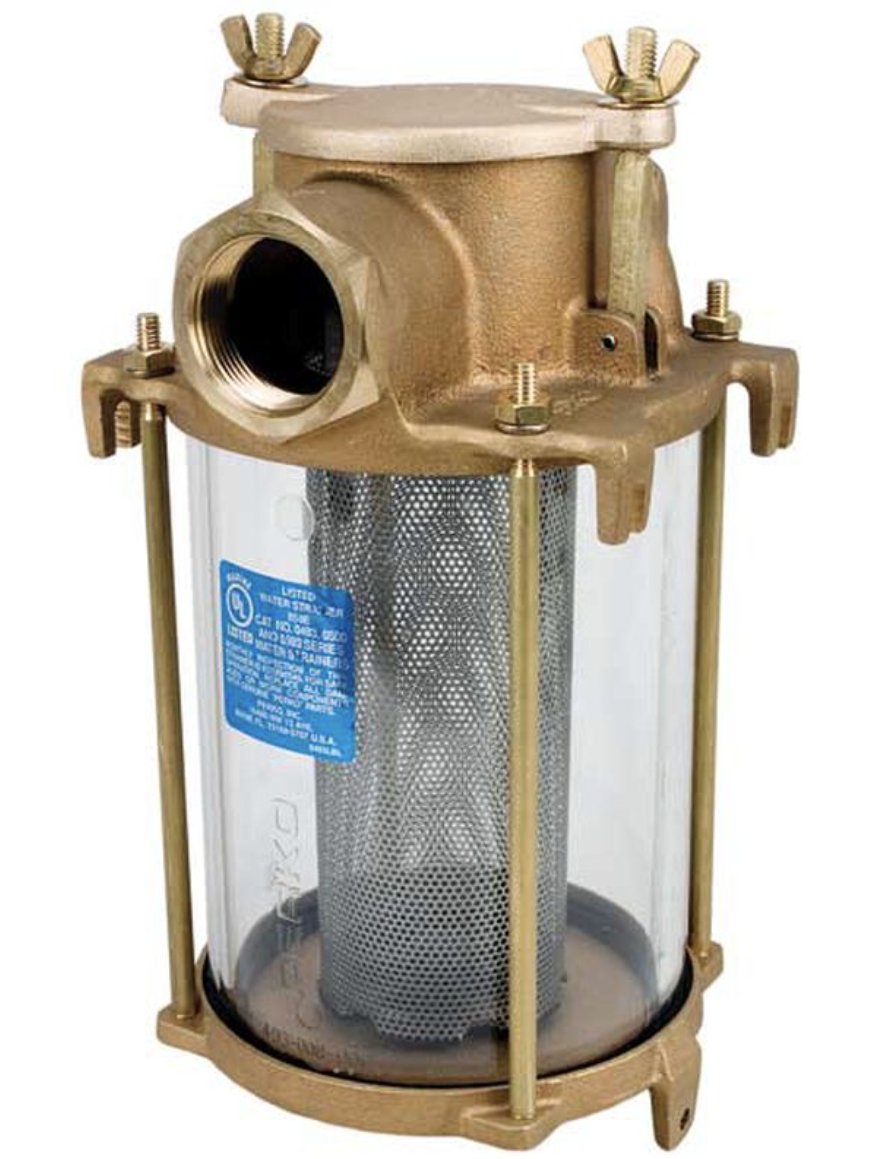
If you clean the filter frequently just rinsing it off with the washdown will do the job, but if there’s accumulated gunk, better use a brush to clean the screen before reinstalling.
As with any fitting bringing water aboard, check it for operation and leaks after reassembling—a misaligned cover can be the start of disaster.
It makes sense to buy a second filter basket when buying a new raw water strainer. This allows you to pop out the dirty filter, pop in the new one, secure it and get underway. You can then clean the dirty one when you get some time to spare.

Sea Strainer Installation
Sea strainers are best installed as close to the seacock picking up raw water as possible while still allowing easy access to both.
Bronze filters typically have threaded inlet and discharge ports that you will need to fit with appropriate bronze tailpieces or hose barbs. For leak-free connections, be sure to wrap the tailpiece threads with Teflon plumber's tape before screwing them into the ports.
Raw water filters must be fastened securely to a bulkhead - water pressure moving through them may cause movement that eventually results in failure of the connecting hose otherwise.
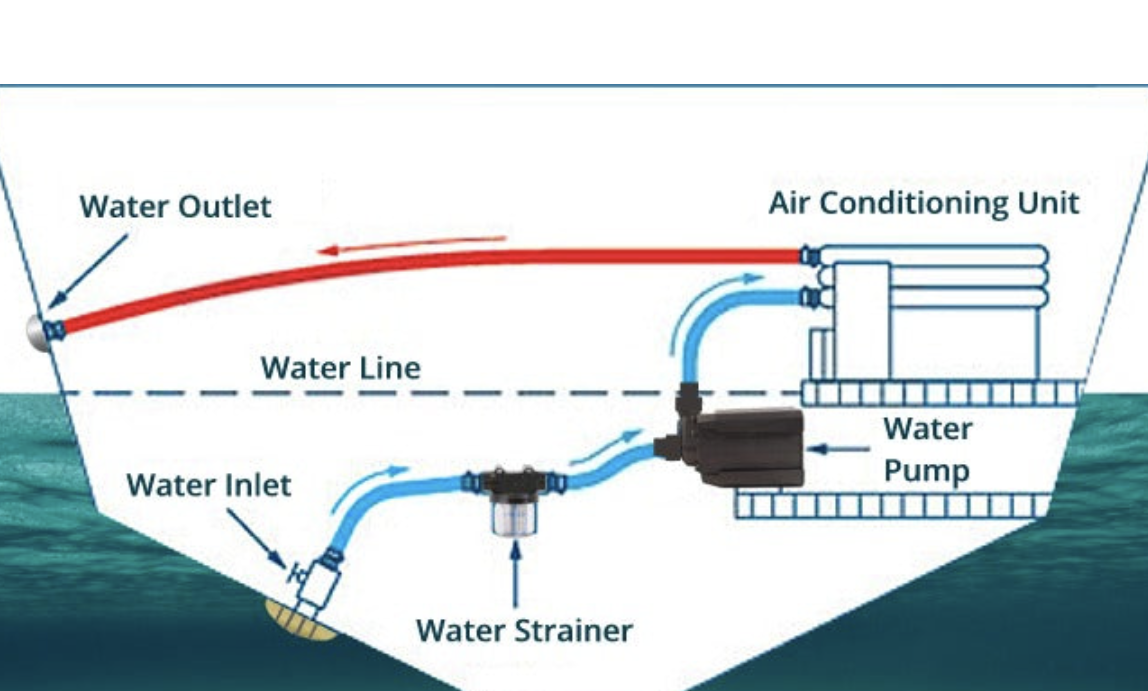
An above-the-waterline location is always best, adding a safety factor should the connections or the strainer body fail. This also simplifies cleaning: You don’t have to be concerned that you closed the seacock before opening the filter housing to clean it. Be sure, however, that the filter is designed for above-the-waterline installation.
The hose connection from the seacock to the filter should be as short and straight as possible. The outlet hose to the pump should likewise not have extra length or bends. Be sure the seacock is connected to the inlet side of the filter, often identified by an arrow pointing on the direction of flow. Use double stainless steel hose clamps on both the seacock and the filter, even if the filter is above the waterline.
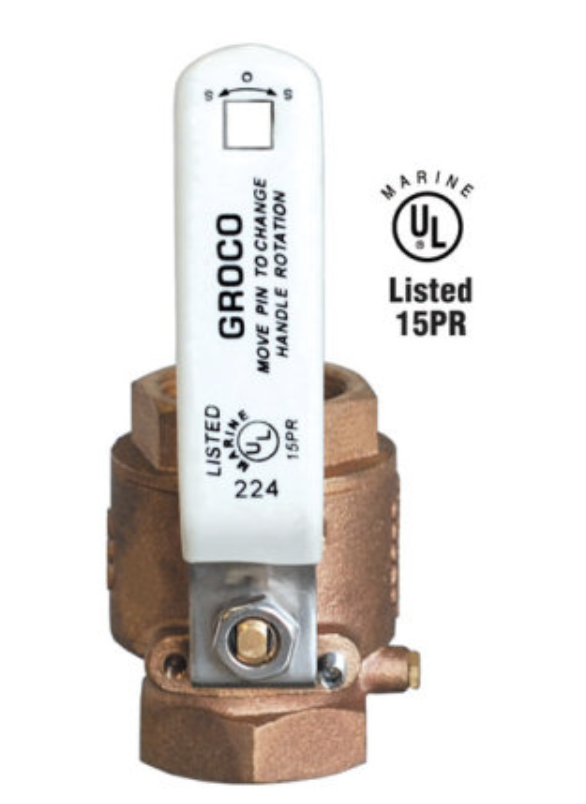
It’s also a good idea to install a second shut-off valve on the outlet or upstream side of the strainer. This will prevent backflow from spilling into your bilge or engine room when you open the cap on the strainer for cleaning.
Raritan has a through guide on installation, including many cautions of which you’ll want to be aware. See it here: https://www.raritaneng.com/uploads/L73v1006-RWS-Instrs-f7774dda.pdf
Maintenance
Cleaning sea strainers is not optional. A filter that’s heavily clogged can cause a diesel engine to quickly overheat, with very expensive consequences. Depending on gauges and monitors to alert you is not a good plan. It’s best to include a check of the filter every morning when you check the oil before starting up.
Checking the strainer filter regularly should be a standard part of your pre-departure checklist, especially if you boat in areas where there are lots of free-floating weeds or other debris.
Modern sea strainers are built for easy cleaning. Most make it simple to access the screen and wipe it down.
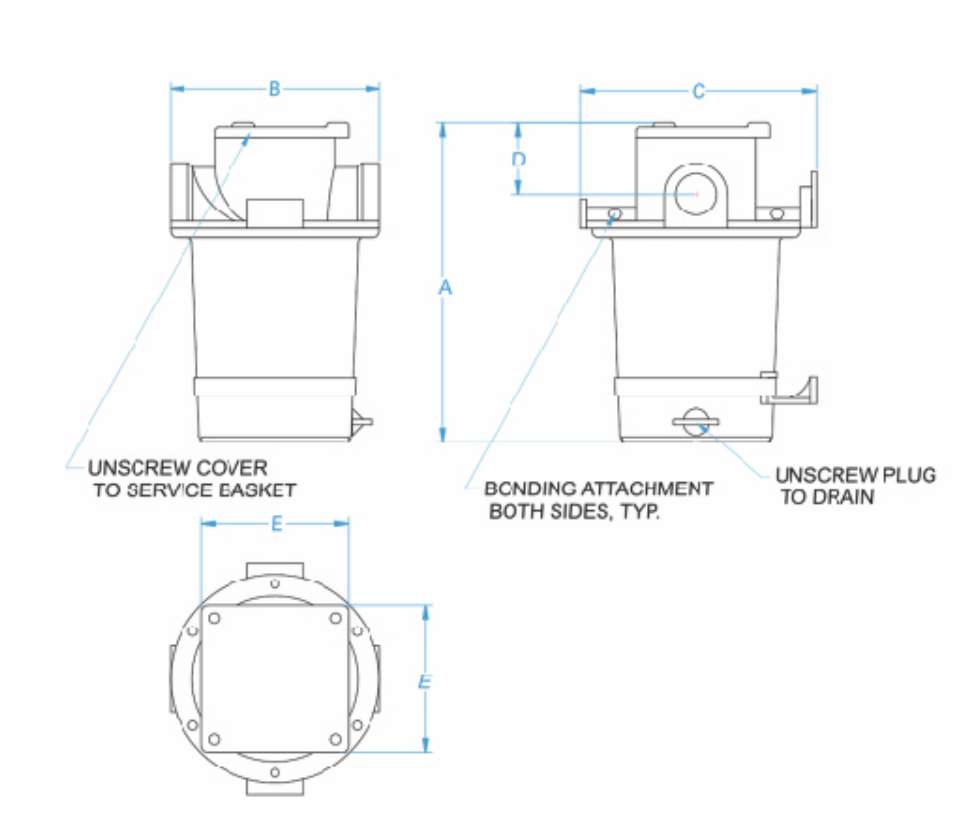
The basic steps of cleaning a sea strainer:
But, if you have any doubts about your sea strainer’s abilities, you might want to disassemble it the first few times you clean it just to check if there are any debris you weren’t able to see.
Here’s the basic procedure for most:
- Check the strainer’s location: If your screen/filter is below the waterline, make sure that you close the seacock before you start cleaning.
- Dump and clean the basket/bowl. How you do this depends on the construction of your sea strainer. It’s possible that your sea strainer came with instructions for cleaning, so make sure you follow them thoroughly at this stage.
- Rinse the screen and basket. Rinsing with fresh water can often do the job alone, particularly if you have a new sea strainer or frequently clean it.
- Replace and be sure the cover seats securely. Check to make sure no water leaks from the device when it’s placed back in service.
That’s all there is to it. Sea strainers take little attention, but the little they do require is very important.
Sea Strainer Choices
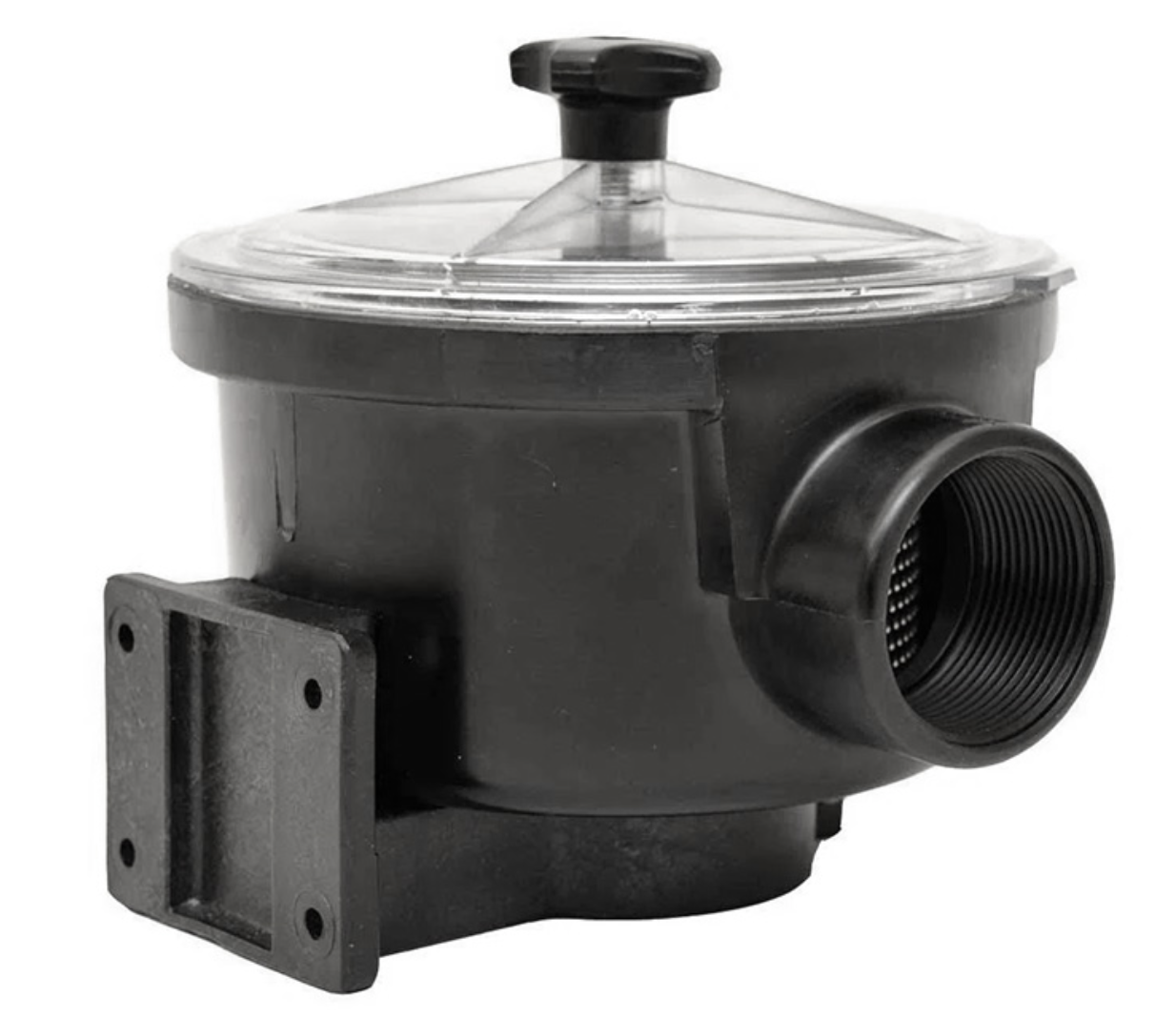
Forespar makes strainers of a composite called Marelon, the only synthetic material to be approved by the Marine U.L. Underwriters Laboratories for use below the waterline. It exceeds the ISO standards and is approved by the A.B.Y.C. (American Boat and Yacht Council), and will not corrode.
The company says Marelon plumbing systems are corrosion and electrolysis resistant and will not freeze or become brittle with age or temperature extremes. Baskets are stainless steel and the caps are clear polycarbonate for easy visual checks. Prices range from $140 to $200; https://www.forespar.com.
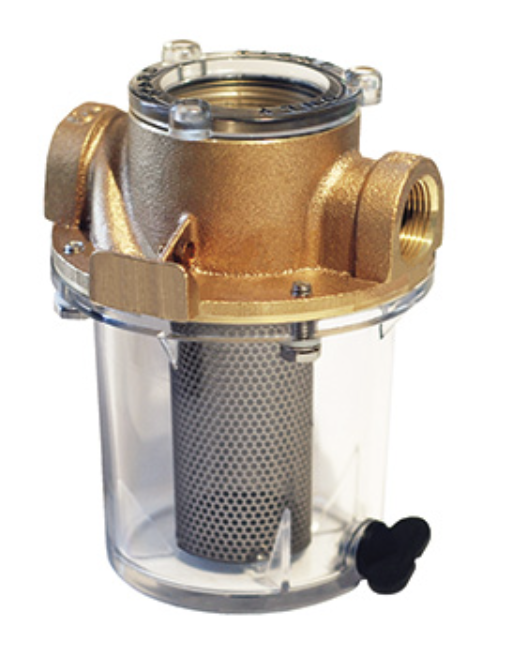
Groco builds durable water strainers with brass bodies and stainless steel filter baskets, plus a see-through “bucket” that allows visual checks for debris buildup.
Their largest model has 3” (mm) ports and is 19.8” (cm) high and has a filtering ratio of 9:1. They are regularly used to protect a variety of marine engines and generators. Price is $563; https://www.go2marine.com.
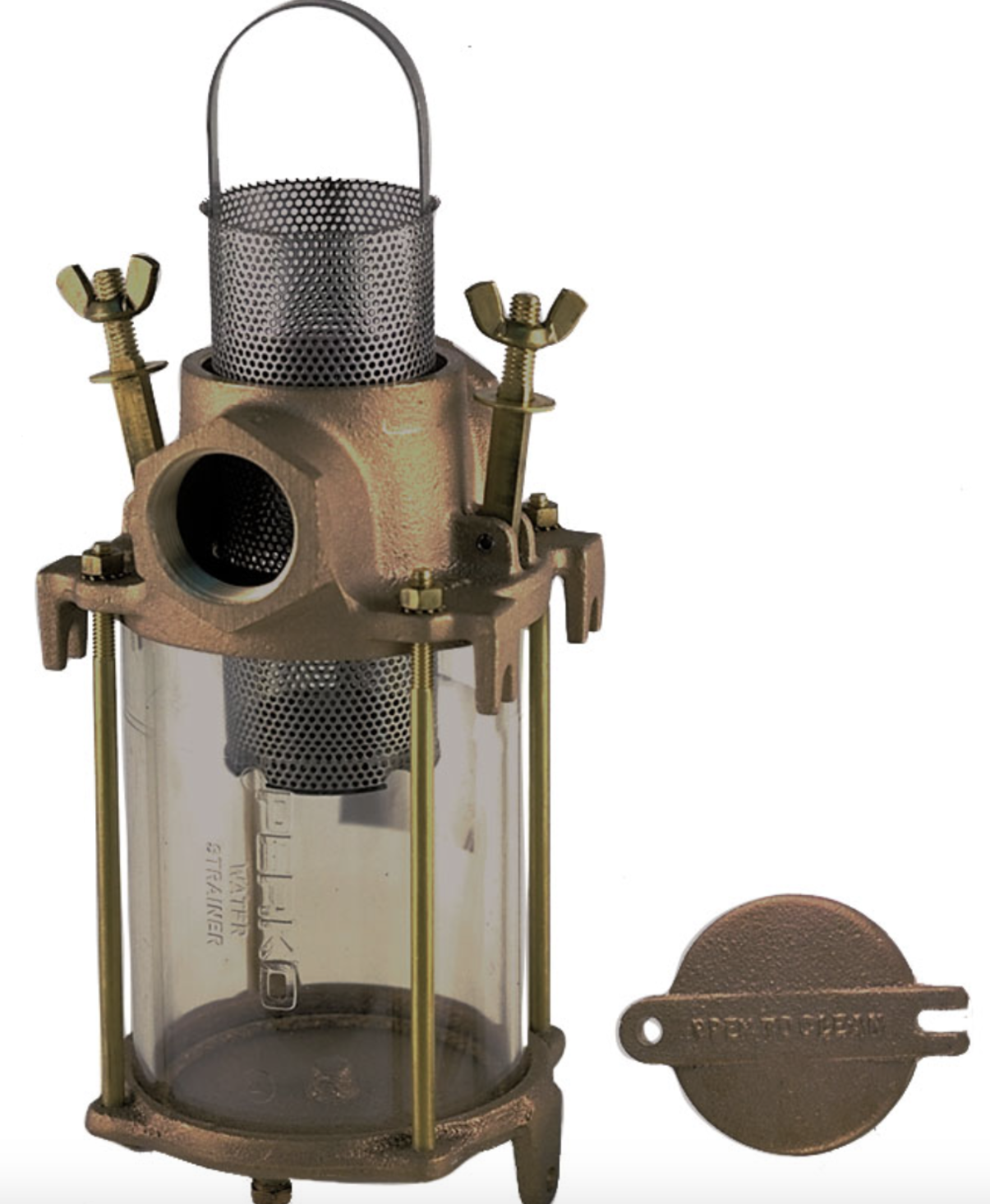
Perko bronze strainers include mounting lugs cast into both sides to assure universal mounting, four outside tie rods and a 316 stainless steel strainer basket to minimize electrolysis. Screen hole diameter is .079 inches, 47% open area, among the highest in the industry for cylindrical strainer baskets, according to the company.
Hinged lugs for the cast marine bronze cover permit easy removal and cleaning of the strainer basket. A drain plug in the bottom casting is provided for easily removing sediment and draining for winterizing. Prices range from under $400 for standard strainers up to $680 for flushing models; https://www.perko.com.

Raritan makes inexpensive non-corrosive nylon sea strainers suitable for small fittings feeding raw-water sinks, toilets and washdowns and located above the waterline.
The clear plastic cap and body allow visual checks of the filter, and the cap screws off for filter cleaning. Prices range from $50 to $140; https://www.raritaneng.com.
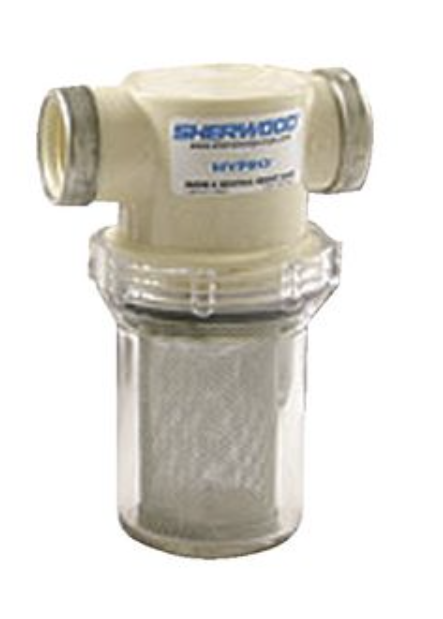
Sherwood makes small composite water filters suitable for use above the waterline, with most models directed at fittings for washdowns and baitwell pumps, raw water sinks and the like. The model shown here has a clear basket for easy visual checks, and the basket spins off to allow cleaning the filter. Prices start at around $67; https://marinepartssource.com.